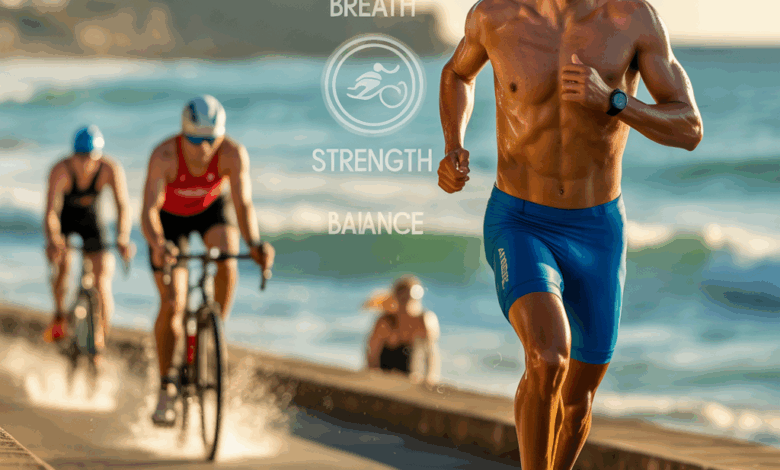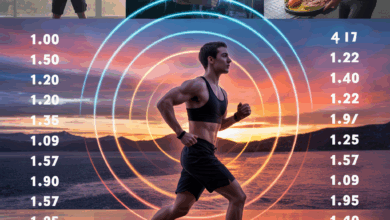Oceanside Triathlon Guide for Race: Swim, Bike, Run Strategies and Race-Day Checklist

Have you ever stood at the shoreline watching waves roll in and wondered how you’ll transform months of training into a calm, confident race day? Whether it’s your first coastal triathlon or you’re chasing a personal-best at Oceanside, this guide breaks down the must-know tactics, practical workouts, and race-day hacks that translate training into a smooth finish.
Why this oceanside triathlon guide for race matters
Coastal triathlons bring unique variables—choppy open-water swims, ocean winds on the bike, and sun/sea air on the run. You can’t treat them like a pool-to-pavement event. This guide focuses on real-world strategies (sighting, wetsuit choices, wind handling, and transition flow) and gives you actionable workouts and lifestyle habits to make race day feel familiar and fast.
Pre-race planning: logistics, gear, and mindset
Race logistics and recon
- Study the course map early: swim entry/exit points, transition layout, bike out-and-back vs. loops, and run terrain.
- Check tide and wind forecasts the week before and morning-of—strong onshore winds change bike handling and pacing.
- Do a drive or bike recon of the race route a week prior if possible to learn corners and rolling sections.
Essential gear checklist
- Wetsuit (check race rules on water temperature), open-water goggles, and swim cap.
- Bike in race-ready condition: pump, spare tube/CO2, multitool, and clipped-in pedals if you train with them.
- Race belt, race-specific shoes (tri shoes or clipped shoes), sunscreen, and a small towel for transition.
Swim strategies: open-water confidence
The swim can make or break your day. Focus on relaxation, sighting, and drafting where allowed.
Workouts that help
- Interval sets: 10 x 200m with 20–30s rest to build race-pace endurance and recover under fatigue.
- Sighting practice: every 3rd or 5th stroke on a 400–800m set; practice lifting your head slightly without breaking rhythm.
- Mass-start simulations: practice controlled chaos with gentle contact in pool or open water with training partners.
Race-day swim tips
- Warm up in the water if allowed; 200–400m easy with 4–6 short accelerations.
- Line up according to ability; start conservatively if unsure about currents or chop.
- Use the first buoy to establish your line—sighting early helps avoid extra distance.
Bike tactics: handling coastal winds and effort management
At Oceanside, expect variable winds and sometimes rolling terrain. Your goal on the bike is to maintain smooth power and avoid burning energy you’ll need on the run.
Key bike workouts
- Tempo rides: 2 x 20 minutes at threshold pace with 10 minutes easy between—teaches steady effort.
- Wind handling drills: ride intervals on exposed roads to practice lower cadence and steady power when gusts hit.
- Brick sessions: 60–90 minute bike + 15–20 minute run to simulate the bike-to-run transition.
Race execution
- Start conservative for the first 10 minutes—let your legs settle into rhythm after the swim.
- Use aero position on flats, sit up around corners or into heavy crosswinds to control the bike.
- Hydration plan: bottle swaps in transition are faster than fiddling on the course—practice this in training.
Run strategy: finishing strong on the promenade
The run is where the race comes alive. Practice pacing off how you felt on the bike and keep nutrition/hydration consistent.
Run workouts
- Progression run: 40–60 minutes starting easy and finishing at race pace for the last 15 minutes.
- Speed intervals: 6–8 x 800m at 5K pace to sharpen turnover.
- Brick runs: short runs after intense bike efforts to teach your legs to adapt quickly.
Sample week: 8–10 week build (race-ready)
Example microcycle that balances swim, bike, run, and recovery:
- Monday: REST or gentle yoga (mobility focus)
- Tuesday: Bike intervals (2 x 20 min threshold) + short brick run (10–15 min)
- Wednesday: Swim technique (intervals + sighting) + light strength training
- Thursday: Tempo run or track intervals
- Friday: Easy swim + mobility
- Saturday: Long ride with some race-pace efforts
- Sunday: Long run or race simulation (short pool/open-water swim + bike + run)
Nutrition and lifestyle: fuel for coastal conditions
Good sleep, consistent fueling, and electrolyte balance are crucial. Coastal races often mean cooler water but warmer shore temperatures—adapt your plan.
Nutrition tips
- Pre-race breakfast: aim for easy-to-digest carbs and a little protein (oatmeal with banana and almond butter).
- Race fueling: 30–60g carbs per hour on the bike depending on distance and intensity; practice these gels/gummies in training.
- Electrolytes: include low-dose sodium in hot conditions or if you’re a heavy sweater.
Transition tips and time-saving tricks
- Organize gear by sequence: helmet on last, shoes clipped, nutrition in easy reach.
- Practice mounting/dismounting with your race shoes clipped to the bike or use elastic laces for quick transitions.
- Lay out a mental checklist and rehearse it in training—muscle memory beats panic on race morning.
Real-world examples: race-day scenarios
Case 1: Jane, first-time coastal triathlete, practiced open-water sighting weekly and used a thin wetsuit for buoyancy—she stayed calm in chop and lost only 30 seconds in transition after practicing bottle swaps.
Case 2: Marco improved his bike split by incorporating weekly wind drills and learned to use a slightly higher cadence into headwinds—he arrived at T2 fresher and ran a negative-split 5K.
Frequently Asked Questions
Q1: What is the best way to practice open-water swimming for Oceanside?
A1: Gradually build exposure—start with short swims in calm conditions, practice sighting and bilateral breathing, and include at least one weekly open-water session. Simulation sets and mass-start practice help with confidence.
Q2: How should I handle windy bike sections on race day?
A2: Stay relaxed on the handlebars, lower your torso in aero when safe, and ease off power through gusts. Sit up around corners and maintain a slightly higher cadence in crosswinds; recon the route to find sheltered stretches.
Q3: What are common transition mistakes and how can I avoid them?
A3: Mistakes include searching for gear, over-dressing, or fiddling with bottles. Rehearse transitions, lay out equipment in order, use elastic laces, and do practice runs of the full T1/T2 routine to build muscle memory.
Conclusion: turn training into a smooth race day
This oceanside triathlon guide for race gives you the blueprint: practice open-water skills, build bike strength and wind-handling, rehearse bricks and transitions, and dial in nutrition and rest. The coastal environment adds variables, but with targeted workouts and race simulations you can convert nervous energy into confident pacing and a strong finish.
Ready to take the next step? Check out our workout routines page for detailed training plans, visit our nutrition guides for fueling templates, and explore wellness tips to optimize recovery. Share your planned race date or questions in the comments—let’s get you to the start line prepared and excited.
Call to action: Sign up for a personalized 8-week Oceanside triathlon training checklist or leave your race goals below and I’ll suggest the best workouts to get you there.





